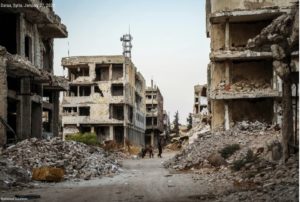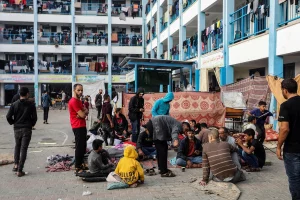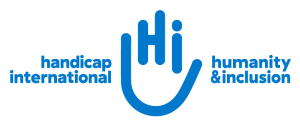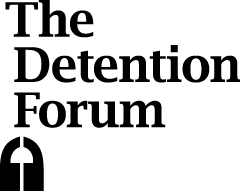“Between a rock and a hard place”: Afghans suffer the consequences of economic deprivation and Isolation – by Dr Florence Rigal and Manuel Patrouillard.
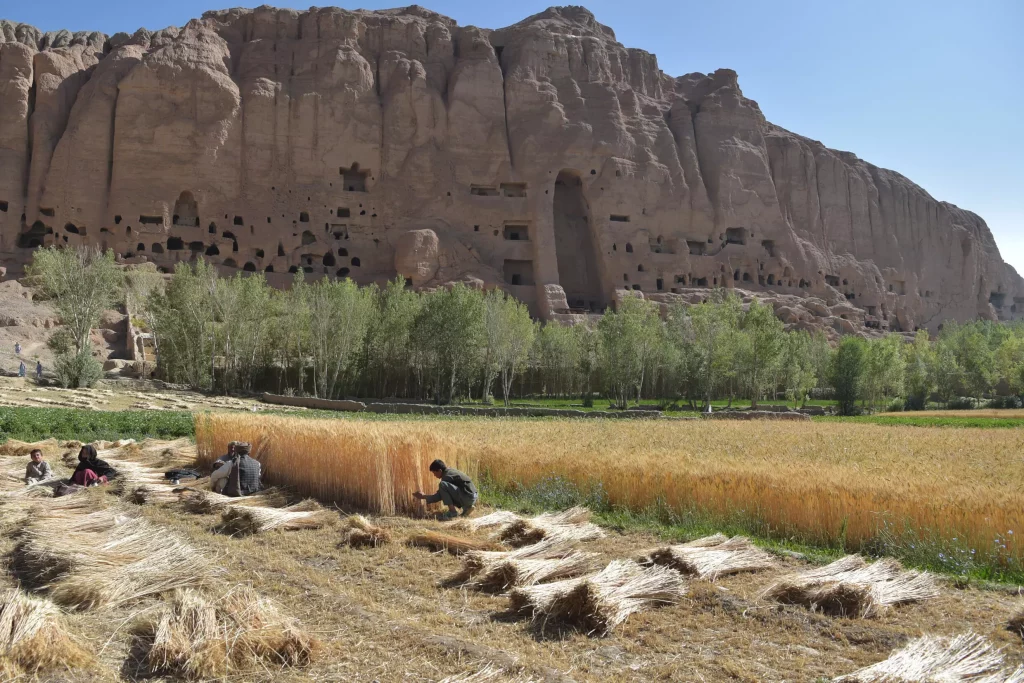
Three years after the return of the Taliban and the gradual exclusion of women and girls from education, public spaces and employment with humanitarian organisations, the de facto government formed by Islamic Emirate of Afghanistan is still not recognised by the international community and Afghanistan is gradually falling off the world’s radar screen.
The recent reintroduction of public stoning and flogging as punishment for women accused of adultery, has been met with minimal reaction from the international community. This highlights a deadlock where neither the Taliban nor the international community are willing to compromise to reach a consensus that might lead to significant advancements in women’s rights in exchange for international recognition.
The imperative of upholding women’s and girls’ rights cannot be overstated. At the same time, Afghanistan is a country beset by a series of major humanitarian crises for which the current international funding levels are totally inadequate. In this extremely serious humanitarian situation, it is more urgent than ever for Western governments to find ways of meaningfully strengthening their support for the people in Afghanistan, including by resuming development funding.
Three years after the return of the Taliban, Afghanistan is gradually falling off the radar.
In its relationship with the Taliban, the West is still dealing with the open wound from the war it lost in August 2021 – a debacle that not even the Doha agreement signed in February 2020 was able to prevent. After defeating the British in the 19th century and the Soviets in the 20th century, Afghans, or more specifically the Taliban, defeated NATO in the 21st century. This has given them a sense of national pride commensurate with the frustration of Western powers, which were forced to make a hasty retreat from the country following the collapse of the Western-supported Republic, leaving millions of mainly urban Afghans who had embraced Western values during the twenty years of foreign military presence to face the consequences of the Taliban takeover.
This defeat was also that of the economic and democratic development model imposed by the West in Afghanistan. Hundreds of billions of dollars were purely and simply wasted; the model failed to resolve the political divisions, increased corruption and NATO’s military incapacity to gain the upper hand over the Taliban. The fact that part of the IEA government had spent time in Guantanamo has not facilitated international recognition and dialogue.
When the Taliban returned in August 2021, they made initial statements on women’s education, a general amnesty, the eradication of terrorism and poppy cultivation that were meant to be perceived as “the Taliban open hand”. This was not enough, however, to stop western governments from pausing development aid to Afghanistan (45% of GDP, 75% of the State budget), freezing the country’s Central Bank assets ($7 billion in the United States and $2.1 billion in Europe, which aligned itself with the United States) and imposing sanctions on financial transactions. While the international community continued to finance humanitarian activities and increased its support to Basic Needs as of mid-2023,
this sudden decrease in development funding did not just affect civil servants in the ministries whose salaries continued to be paid by the Taliban, but also all hospital salaries until they were partly covered by both UNICEF and ICRC on a temporary basis. This intransigent stance was primarily dictated by the previous Taliban experience, which left horrendous memories with regards to violations of human rights and in particular the rights of women and girls. Indeed, the memories of corporal punishment and public executions remain vivid in the memories of the Afghan population in country and abroad.
In light of this development and the passive resistance of local civil society (including NGOs), the IEA has gradually taken radical decisions consistent with their policies of the 1990s, but in contradiction with their commitments of August 2021, in particular by prohibiting girls from attending secondary and tertiary education and women from working for NGOs (except in health care and education) and the UN through a series of decrees issued by the Emir.
These decrees reflect a very strict interpretation of Sharia law to which the majority of the population does not seem to adhere and are against the international norms to which the Taliban seemed to agree in the Doha agreement. The Taliban have also introduced corporal and public punishments according to their understanding of Sharia law: since 2021 there have been reports of corporal and public punishments in the different provinces of Afghanistan according to UNAMA reports. On the orders of the Emir, the IEA through its Ministry for Vice & Virtue also introduced a law that will monitor that public behaviour is in accordance with Sharia law. The Emir in his recent Eid message criticised western democratic values and promised to further intensify the implementation of Sharia law and added that women will be stoned to death if caught in adultery. While it is true that the Taliban are by and large a minority amongst the 40 million Afghans (the Taliban fighting force was estimated at 70,000 men), they are certainly popular among most of the 70% of Afghans living in very conservative rural areas who share some of the Taliban’s codes and values (wearing of the hijab, segregation of men and women, compulsory mahram, etc.). However, with the ban on girls’ education, the Emir has taken a decision that few people support: not the Taliban’s rural base, not the “sister countries” (Qatar, Pakistan, Turkey) who dispute its Koranic justification, and not even many Taliban officials who send their daughters to school in Qatar or Pakistan.
As the months go by, this radicalisation is building a wall that will cut Afghanistan off from the rest of the world, as it is only strengthening the resolve of Western governments (Germany, Canada, Australia, France…) to maintain their stance on the Taliban.
While positions on both sides seem to be immutable, some countries appear to be more pragmatic and more open to breaking the deadlock. On the European side, the European Union is present in Kabul with a chargé d’affaires and an ECHO team, while nearly all embassies are closed, and diplomats are working remotely from Doha or their capitals. Only Norway, Switzerland, Netherlands and the United Kingdom seem inclined to reopen dialogue, as does Japan. But for France and Germany, it is out of the question to engage. Among emerging countries, China has sent an ambassador (without recognising the Afghan regime) to promote several economic initiatives, including the exploitation of mineral deposits. China has also received an official diplomat from the Taliban and dialogue with central Asian countries is also ongoing.
Current events in Ukraine and Palestine have moved concerns about Afghanistan down the international community’s agenda.
Yet Afghanistan is beset by a series of major humanitarian crises, for which funding is simply inadequate to meet the increasing needs.
Economic crisis. Western sanctions and the departure of hundreds of thousands of educated Afghans have led to a 35-40% shrinkage in the economy and the loss of around one million salaried jobs, according to various sources. Whereas one salary supported around fifteen people before August 2021, it is now estimated that around thirty people have to survive on a single salary in urban areas.
Food crisis. OCHA estimates that 35% of Afghans are food insecure and 53% need humanitarian assistance. The last winter has been particularly difficult as the two previous ones severely depleted food stocks and financial reserves.
Social and psychosocial crisis. The exclusion of half of the Afghan people from education, public spaces (hammams, parks, etc.), and employment in certain sectors, as well as public morality policing by the Vice & Virtue police, have had a huge impact on the Afghan people, especially on women and girls. But it is also affecting the mental health of fathers and brothers. This is particularly true of the decision to exclude girls from education: Afghans feel helpless in the face of what one colleague interviewed called “the disappearance of any future for themselves, for their daughters and for their sisters”.
Drought and water management crisis. Afghanistan has been suffering from an historic drought for several years. In Kandahar province, for example, the water table has dropped from two to one hundred metres in the space of twenty years. Water levels have dropped at alarming rates in other provinces as well including the capital Kabul, and this phenomenon is exacerbated by thousands of unauthorised wells using pumps powered by solar panels. This crisis is fuelling tensions with neighbouring countries, as Afghanistan seeks to make better use of its water resources before they leave the country, in particular by constructing a huge canal diverting the waters of the Amu Darya in the north of the country and managing waters in the Western regions when they leave for Iran.
Impact of explosive weapons on civilians. Over the last ten years, Afghanistan has remained one of the top three countries affected by weapons and explosive remnants of war, especially improvised explosive weapons, which account for 79% of civilian casualties.
Afghan refugees forcibly returned from Pakistan and Iran. As it did in 2022, Pakistan threatened to send back more than a million Afghan refugees in 2023, as from 1 November. But unlike in 2022, the Pakistani government has made good on these threats in the run-up to the 2024 national elections: according to IOM, more than half a million Afghans have already returned to Afghanistan from Pakistan via the borders at Torkham and Spin Boldak. Recently Pakistan announced the return of yet more Afghan refugees from 15 April 2024 including those with valid refugee cards.
Obstacles to Humanitarian aid. IEA’s regulatory policies and strict measures to control aid directly targeting NGOs and the UN (ban on women’s work, transfer of activities in the education sector to national NGOs, mobile health units made into fixed health centres, etc.) are severely damaging humanitarian activities in Afghanistan. Similarly, the sanctions imposed by the international community are having a real impact on the ability of NGOs to run their programmes. Accessing the international banking system or purchasing certain essential equipment has become complicated despite the existence of clear and unequivocal humanitarian exemptions.
Humanitarian funding crisis. According to OCHA, only 7% of needs will be funded in 2024! There is a shortfall of close to 3 billion dollars for the 17.3 million Afghans targeted by humanitarian aid projects, out of the 23.7 million Afghans in need.
Earthquakes. A factor that aggravates all man-made crisis, Afghanistan suffers of being at the crossroads of two tectonic plates (the Eurasian and the Indian), which collided to create the highest mountain range on our planet, the Himalayas. The friction between these two plates causes numerous earthquakes throughout the country. The two most recent were the deadliest in decades: one in Paktika province in June 2022 killed around a thousand people (magnitude 5.9). The other in Herat province in October 2023 killed more than twice that number (magnitude 6.4).
In this extremely concerning humanitarian situation, it is more urgent than ever for Western governments to find ways of meaningfully strengthening their support to the people in Afghanistan.
There is a need to recognise that a dual punishment is being inflicted on women and young girls who are the principal victims of the Taliban regime. They are however also the biggest victims of Western sanctions, which have dramatically reduced aid, seized external reserves and, who have hit women the hardest: They are the first to suffer from households’ lack of food (men and boys help themselves first), the collapse of the health system and the increase in domestic violence due to the economic crisis. Moreover, young girls are being forced into marriage at an increasingly early age, as their dowry offers a temporary reprieve to some families and as there is no other option left for them but to be married, entailing a huge restriction on their quality of life.
Absolutely crucial is also the urgent attention and inclusive measures required to address the pressing needs of persons with disabilities, whose challenges are exacerbated by the multifaceted crisis unfolding in Afghanistan. Key players in disability support are either withdrawing due to disagreements with the Taliban or facing funding shortages. This leaves major regions of Afghanistan with literally no physical rehabilitation services for the people who need them. Alongside roadside accidents, explosive ordnance remains one of the major causes of disabilities in Afghanistan. The humanitarian mine action sector is also facing challenges, with a reduction in funding impacting the quality of mine action services and the technical capacity of the government structures involved in this sector.
The bias of the West, which saw itself as Afghanistan’s saviour should also be recognized. In reality, 70% of the country was excluded from international aid because it was already under Taliban control. Most rural areas had no access to infrastructures, and not all rural areas had access to education or healthcare, which are the main focuses of international aid.
Shouldn’t we acknowledge that humanitarian aid is not a substitute for economic development? Only flexible, multi-year development aid can help support civil society and the population over the long term by addressing the causes of the humanitarian crises proliferating in this country. Indeed, the population, too busy with the daily struggle for survival, has other priorities rather than confront the regime. Development aid and the release of Afghan assets are the necessary conditions for the evolution towards a more favourable society.
Shouldn’t we be reminding States of the need to implement the humanitarian exemptions adopted by the UN Security Council to reduce pressure on humanitarian action? It is essential to make all stakeholders, including those in the private sector, aware of these exemptions. The responsibility for explaining these mechanisms currently rests solely with humanitarian actors.
Isn’t helping to build compromises with creativity and agility – in particular to get girls back into education and back on the road to emancipation – the kind of ethical action that we hold dear at MDM and HI? Compromises are possible in education (schools, health sectors) and employment (businesses not subject to exclusion) as well as on practical matters that require immediate attention. The maintenance of virtually unrestricted access to the internet and the widespread use of mobile phones leaves a window ajar on the rest of the world, including the West. Generational differences exist between the Taliban, and even if internal debates remain confidential and the Taliban movement remains loyal to the Emir, hope has not evaporated; it is fuelled by isolated acts by certain ministries that are more conciliatory on exemptions.
However, nuanced discourse is inaudible in the West, even if it is voiced by women based in Afghanistan and working on the humanitarian response and who close to the realities on the ground. Interacting with the IEA does not mean officially recognising the regime or legitimising its actions. On the contrary, it is essential to be engaged on the side of the more progressive factions, who are the only ones that can promote change from within. As it is essential to gain a clearer understanding of the context and its challenges to find common ground and guarantee principled humanitarian access and perhaps, as an objective, make gradual progress on the issue of women by linking such progress to increases in development aid.
The release of development aid into Afghanistan does not only guarantee the resilience of Afghans, their economy, and overall well-being but may bring a change in the Taliban. Currently, if Afghans need food for survival for a day, they also need a clear picture of their future with employment opportunities. If the humanitarian aid acts as a salve, development aid is a comprehensive cure. A pivot to development should happen immediately and regardless of the status of the Taliban on the international stage as there are ways and clear frameworks to ensure development and basic needs aid delivery directly to Afghans. This can only be achieved through dialogue. Not by oblivion.
Authors: Dr Florence Rigal, Past-President of Médecins du Monde France, and Manuel Patrouillard, Global Managing director of Handicap International – Humanity & Inclusion.
The content is the authors’ responsibility alone and does not necessarily reflect the views of United Against Inhumanity or any of its other members.


